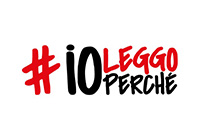*Davide Morosinotto and Pierdomenico Baccalario, authors
 Two key words shaping this change are crossmediality and transmediality; the former signifies that the same story is channeled by different means while the latter refers to a story which changes and multiplies itself according to the medium.
Two key words shaping this change are crossmediality and transmediality; the former signifies that the same story is channeled by different means while the latter refers to a story which changes and multiplies itself according to the medium.
Nobody really knows what the stories of the future will be like. If the story becomes non-linear, as happens for example in a videogame, it will no longer be possible to depend on rigidly defined plots and unexpected narrative twists because these would change according to the choices of the player. So it will be essential to do more work on the characters and arrange things so that each event helps to make them grow and become more interesting and closer to those who are following the story.
But children's publishing is already changing. We are lucky to have been working for some years with a group of writers who call themselves, jokingly, the «Immergers». The philosophy of our group is based on a shared use of technological tools to pool plots and ideas without necessarily having to meet. With our colleagues we plan and share ideas and analyses. And we try to understand which story is best suited to the characteristics of individual authors, because each narrator has his or her own way of «telling». This is the keystone for creating interesting books and not mass products to serve the market.
The publishing houses most receptive to change look for stories which possess four characteristics: firstly, the potential to cross over technologies, because readers could listen to the story in an audiobook (very widespread abroad) or read it on paper or with an e-reader; secondly, the ability to cross over geographical borders, appealing not only to a young reader who is Italian, but also English, French, Indian or Chinese. In addition, the new children's book should also attempt to cross over genres and age barriers. A children's book is, by definition, destined for a pool of readers clearly identified in terms of their age. And yet the literary success stories of recent years are the so-called «cross-overs», stories that manage to excite young boys and girls as well as adolescents and even adults.
We cannot know if the books that we will read are going to be better than those of the past, but we know for sure that they will have their readers. Stories have always existed from the times of the bards and poets, when they were handed down by word of mouth. Then, as now, some will be forgotten because they are unappealing, or by mistake or misfortune, but others will continue to live on through the ages and speak to those who come after us. This is still the only thing that distinguishes us from the animals. They talk about what is indispensable. We, on the other hand, love what is useless. At least for those who do not read.


















